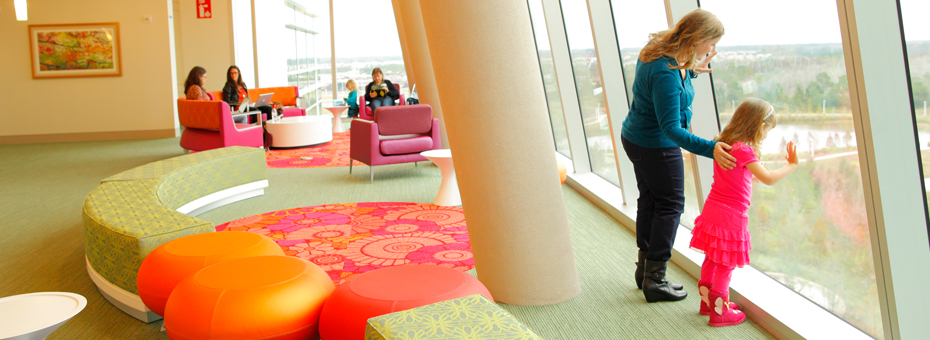During a visit to Nemours Children’s Hospital in Orlando, I had the privilege to walk through a facility built from scratch using lean principles.
As I walked the halls, I was in awe of the beautiful architecture and state of the art technology. The hospital was so aesthetically pleasing I forgot I was even in a hospital. Impressed as I was by the cerulean painted walls and mission control for central monitoring, most outstanding was this hospital’s dedication to focusing on the needs of patients and families. I quickly learned that this hospital asks and listens to what customers really want.
Early on in the process of mapping the outline for the facility, hospital staff brought in parents from their Nemours Family Advisory Council to work through the layout, design, and feel of the hospital—not just for the design of the building, but for all aspects of patient care.
Here are some of my favorite examples of staff members listened to patients and families:
Patient Rooms
- When painting the ceilings, the hospital had the option of going with a matte or gloss finish. Parents told the hospital, “If my child was recovering from surgery, he might look up at the ceiling and be frightened by an image of himself with tubes in his nose or arms. He wouldn’t see his typical reflection.” So the hospital went with the matte finish and made sure this didn’t happen.
- Couches in patient rooms have removable cushions and sleep like an extra-long twin bed. This way parents can rest comfortably near their children. Parents helped select the color and fabric on couches. When they asked for an outlet near the couch to plug in their phone, they got one.
- There’s a full length mirror in bathrooms so the child can see their mom or dad while they brush their teeth and the child is still in bed.
- All patient rooms have refrigerators, moveable desks, and chairs so parents can eat with children, get work done, etc.
- Outside each patient room is iPad-type technology linked to the child’s electronic health record. Seconds after a member of the care team enters information into the record, it is displayed on the iPad. For example, if a doctor determines a child can no longer take food by mouth, this is immediately displayed on the iPad with a special icon.
- Staff badges are scanned by a sensor on the ceilings of patient rooms upon entry. A photo and name pops up on the main screen so family members know who is entering the room. This important safety measure ensures families also know the name and title of the person providing care.
- Cameras are installed in patient rooms. If a paramedic monitoring all inpatients from mission control sees signs of distress from vitals signs, for example, the paramedic can ask for permission to instantly get a visual into the room.
Staffing
- Nemours trained members of the Family Advisory Council on interviewing techniques and had parents interview final candidates for new staff positions. These moms and dads interviewed more than 100 physician candidates.
- Hospital leaders truly value family feedback. In fact, the CEO says he was down to two finalists for the position of Chief Administrative Officer and it was parents’ feedback that led him to offer the job to the person he chose.
Facilities Management
- Each medical unit or floor of the hospital is painted a different energetic color. To help patients and families find their way through the hospital, each pod (or section of beds) is also a different color associated with a different animal. For example, the 3rd pod on the 5th floor is orange and has an image of a butterfly over the doorways of each room.
- Most patient rooms have the same setup so patients don’t have to be moved to another room if their diagnosis changes. This frees up staff time, prevents rework, and minimizes stress on patients and families. The exception is less than 10 rooms which have 2 beds (in the case of siblings) or intensive care rooms which have additional capacity for lifesaving equipment.
In Lean Product and Process Development, the late Al Ward wrote, “For success—for consistently profitable operational value streams [in this case consistent patient care]—we must know what customers want.” He spent much of his time teaching people how to integrate this information into the design of the customer environment and experience. While many healthcare organizations in America don’t have the option to build their facilities from the ground up with all the necessary parties involved—this particular hospital has the benefits of being in Orlando, a place with wealthy donors and plenty of local sponsorships—what’s important here is the great lengths this hospital has gone to satisfy the needs of their customer. This is a lesson we can carry with us no matter what we do or where we work.
How do you integrate the voice of your customer into your daily work and larger organizational strategy? How well do you know your customers? For me, I know there’s always room for improvement.





